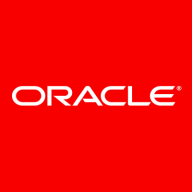

Oracle WebLogic Server and IBM WebSphere Application Server compete in the enterprise application server market. While both boast robust features, Oracle WebLogic tends to have the upper hand in administration and ease of configuration, but struggles more with cost considerations.
Features: Oracle WebLogic Server's primary features include an administration console that offers a comprehensive range of features, robust clustering capabilities for high availability, and Exalogic optimizations that ensure best I/O and thread management performance. IBM WebSphere Application Server excels with its high availability, configuration flexibility, and Portal Virtualization, providing seamless integration with legacy systems essential for enterprise operations.
Room for Improvement: Oracle WebLogic users highlight the need for a microservices-suited lighter version, better pricing strategies, and improved integration with Oracle tools. Complexity in administration and high licensing costs are pressing issues. IBM WebSphere users want enhancements in resource consumption, usability, pricing, and contemporary framework support, including cloud services. Simplifying licensing and reducing operational overhead are also key focus areas.
Ease of Deployment and Customer Service: Oracle WebLogic Server is mainly deployed on-premises, praised for extensive support and regular updates, though service costs are substantial. IBM WebSphere supports flexible hybrid and public cloud deployments but receives mixed support reviews, with noted needs in expertise and timeliness. Documentation is extensive for both, but responsiveness is an issue.
Pricing and ROI: Oracle WebLogic Server follows a costly licensing model based on physical cores, with robust performance that justifies the expense for resource-heavy enterprises. However, it poses challenges for smaller entities. IBM WebSphere Application Server is similarly costly, with a complex licensing model, though favored for scalability and enterprise-grade support. Both servers leverage discounts for purchase decisions, reflecting their high pricing scales and need to justify the costs.
| Product | Market Share (%) |
|---|---|
| Oracle WebLogic Server | 16.4% |
| IBM WebSphere Application Server | 10.5% |
| Other | 73.1% |


| Company Size | Count |
|---|---|
| Small Business | 9 |
| Midsize Enterprise | 6 |
| Large Enterprise | 23 |
| Company Size | Count |
|---|---|
| Small Business | 15 |
| Midsize Enterprise | 5 |
| Large Enterprise | 17 |
IBM WebSphere Application Server (WAS) is a middleware platform developed by IBM. It provides a range of services and tools to help organizations develop, deploy, and manage Java-based applications. WAS is part of IBM's WebSphere product family and provides a secure, scalable, and highly available platform for developing and running web-based applications. WAS provides a secure, scalable, and highly available platform, making it an attractive solution for organizations looking to develop and deploy enterprise-grade applications.
IBM WebSphere Application Server Features
IBM WebSphere Application Server has many valuable key features. Some of the most useful ones include:
IBM WebSphere Application Server Benefits
There are many benefits to implementing IBM WebSphere Application Server. Some of the biggest advantages the solution offers include:
Reviews from Real Users
IBM WebSphere Application Server is a solution that stands out when compared to many of its competitors. Some of its major advantages are that it is stable, supports many languages, and is resilient.
Princewill O., Head Banking Application Customization and Reporting at a financial services firm, states, “[The solution is] very stable, supports many languages, and helpful for faster time to market.”
"What's most valuable in IBM WebSphere Application Server is its resilience. When you use the solution, you know that after the communication has been done, there will be no doubt that the data has reached its destination,” says Nicolae C., System and Solutions Architect at Seidor.
Another PeerSpot reviewer, an Enterprise Technical Leader at a tech services company mentions, “[It is an] enterprise-level product with extensive console capabilities, including the ability to control multiple JVM containers.”
Oracle WebLogic Server is a powerful enterprise application server renowned for hosting and managing Java-based applications. Its robust infrastructure supports seamless deployment, making it suitable for both on-premises and cloud environments.
Oracle WebLogic Server provides a comprehensive solution for enterprise Java deployments, offering strong integration capabilities with Oracle technologies and other enterprise systems. It features a versatile administration console and robust clustering that ensure high scalability, stability, and reliability. Known for its comprehensive monitoring tools, WebLogic Server ensures that applications perform optimally, while its flexibility and ease of management make it a preferred choice for many enterprises. Despite its high pricing and certain challenges like start-up times and configuration complexities, it remains a strong choice for organizations needing reliable, high-performance application hosting. Oracle's efforts to address patch management, error handling, and memory management continue to evolve, aiming to enhance overall efficiency and security.
What are the key features of Oracle WebLogic Server?Oracle WebLogic Server is predominantly deployed in industries needing robust application hosting and management, such as banking, e-commerce, insurance, and financial services. Its reliability and adaptability make it suitable for internal applications, ERP solutions, and load distribution tasks. Organizations utilize it for SOAP solutions and develop platforms both on-premises and in the cloud, benefiting from its powerful integration with Oracle Service Bus and efficient management of client-specific environments.
We monitor all Application Server reviews to prevent fraudulent reviews and keep review quality high. We do not post reviews by company employees or direct competitors. We validate each review for authenticity via cross-reference with LinkedIn, and personal follow-up with the reviewer when necessary.